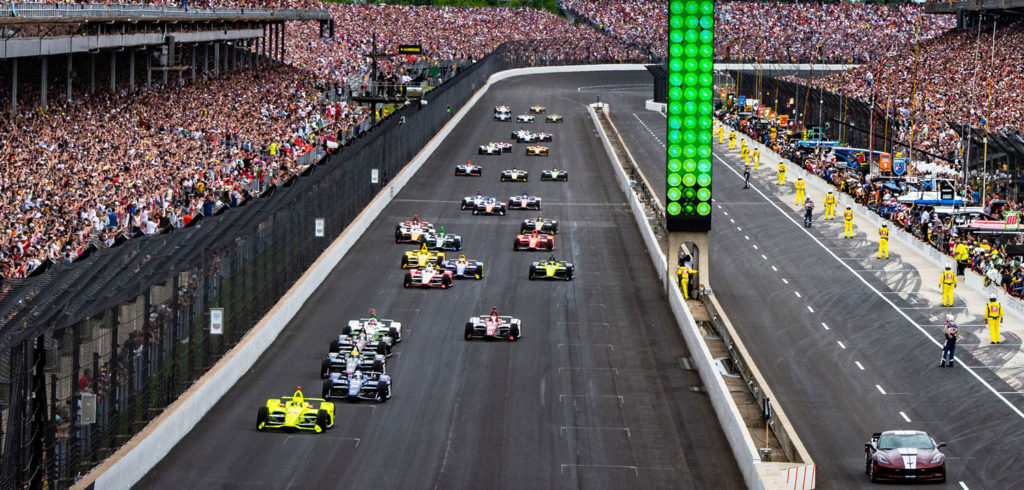The NTT IndyCar Series is to introduce hybrid systems to its powertrains for the start of the 2022 season.
IndyCar had planned to introduce new engine specifications to the series from 2021, and a ‘next generation’ chassis, replacing the current Dallara DW12, in 2022. The basis of the new engine formula was announced in 2018, increasing the specification from the current 2.2-liter units to 2.4-liter twin-turbo V6 engines.
However, with hybrids now assuming greater importance in road cars, IndyCar has worked with series engine manufacturers Chevrolet and Honda to delay the engine introduction by a year in order to incorporate the hybrid.
Series organizers say that the hybrid systems, which will most likely be produced by a single contractor, will provide a number of benefits, ranging from increasing competition to improving safety.
The hybrid KERS unit will consist of a multi-phase motor, inverter and electric storage device that will create energy recovery from the car’s braking system. This will be integrated into the push-to-pass system used by drivers for overtaking on road and street courses.
The current push-to-pass, which is limited to 200 seconds per driver in each race, will gain additional horsepower from the hybrid. The 2021-specification engines were originally expected to produce in the region of 800hp, plus around 50hp extra generated by additional turbo boost as part of the push-to-pass system. The KERS unit is expected to add an additional 50hp to achieve IndyCar’s stated goal of total horsepower levels of 900hp-plus.
The hybrid unit will also allow a car to be started by the driver from the cockpit, replacing the current hand-held external starters. A driver will be able to restart a stalled car during a race, preventing the race being put under caution for the car to be recovered and cutting the time safety teams are on the circuit.
IndyCar says the one-year delay in introducing the new engine will allow more time to both develop further innovations for the new race package, and for a potential third engine manufacturer to join the series. IndyCar, Chevrolet and Honda are known to be keen to attract at least one further OEM into the series in 2022.
The new engine regulations, which have emerged from a five-year strategy for the series commenced in 2016, will be in place for six years, from the 2022 through the 2027 seasons. IndyCar hopes this will provide a clear vision and stability for engine manufacturers and teams in the series, and attract new entrants.
IndyCar president Jay Frye described the hybrid announcement as part of an exciting time for the series. “As we move toward the future, we will remain true to our racing roots of being fast, loud and authentic, and simultaneously have the ability to add hybrid technology that is an important element for the series and our engine manufacturers,” he said.
Both engine manufacturers have backed the introduction, particularly its relevance to the growing influence of hybrid technology in their road-car engines. “The partnership between Chevrolet and IndyCar remains a strong platform for showcasing relevant technologies that we incorporate in our production engines, and transfer learnings in performance, reliability and efficiency between the racetrack and the showroom,” said Chevrolet performance and motorsport head, Jim Campbell.
“Honda is committed to racing in order to develop people and technologies relevant to the future of our sport and our world,” said Ted Klaus, president of Honda Performance Development. “IndyCar offers us the perfect platform to prove out both people and technologies in an environment where measurement of successes and failures is crystal clear.”
Many aspects of the new technology still need to be decided before its introduction, such as the specification of the new system, its use in racing, and the training needed in such areas as circuit safety teams when dealing with hybrid-equipped cars. Teams in the series will also want indications of the potential cost of the new technology.



